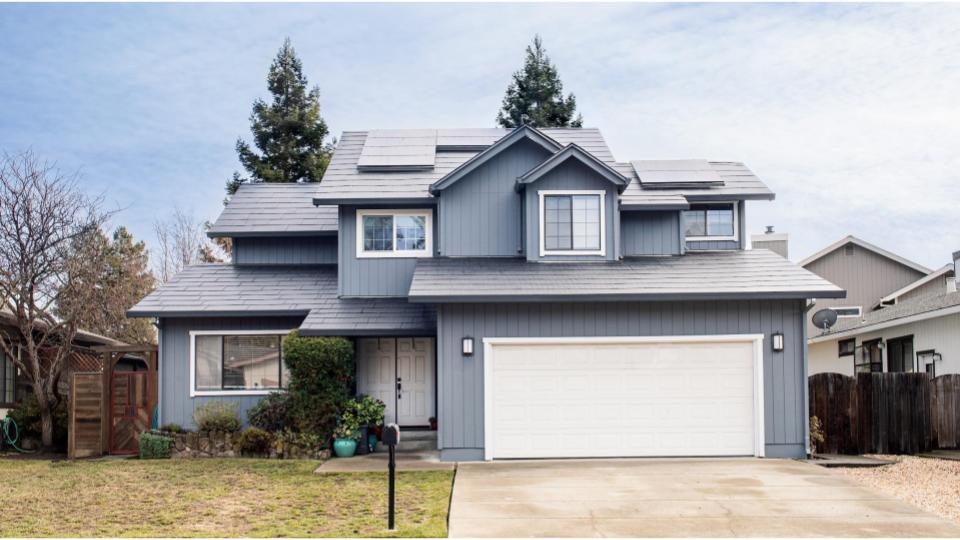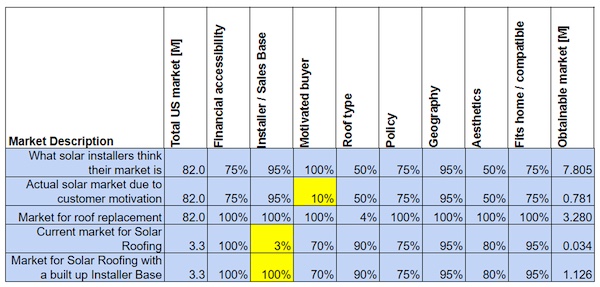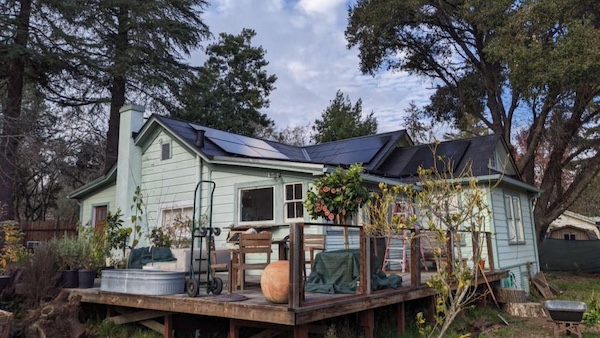The Failing of Building Integrated Photovoltaics
I’m just going to say it, BIPV is dumb.
Hear me out….
Solar is the most affordable form of energy that has ever existed on the planet, but only because the industry has been working towards it for the past 15 years. Governments, manufacturers, building owners, and (for the most part) utilities, are collaborating on a massive scale to implement a transition from fossil fuels to renewable energy. Our Industry exists currently to serve the need and the want for a clean energy infrastructure. The traditional definition of BIPV, narrowly focused on replacing building components, does not align with the pressing need for immediate, impactful measures. Can we set our sights on scalable options that address our energy challenges with the urgency and efficiency they demand?

In a recent round of funding through SETO and the DOE, BIPV is defined as ”photovoltaic materials that are used to replace conventional building materials in parts of the building envelope such as the roof, skylights, or facades”. Shouldn’t this more accurately be called “Building Material Replacement PV” (BMRPV)? Literally, the definition of “Integrated” is “with various parts or aspects linked or coordinated.” The essence of the problem here is that this BIPV definition excludes retrofit rooftop solar.
The Architectural Solar Association has developed the concept of “Architectural Solar”, which includes retrofit solar as well as BIPV. They propose that solar should enhance the existing structure rather than exclusively replace it. However, they fail to acknowledge that retrofit solar does enhance the structure by preventing UV damage of the roof, reducing thermal loads, reducing sound from rain, and protecting the roof beneath it from wind and hail. They also miss the concept that a building could enhance and enable solar.
An asphalt shingle roof and retrofit solar is BIPV. It is not the best BIPV, but it fits the definition. Yes, there are problems with asphalt shingles, but it is the number one roofing type in the US. It’s not a good roof. In places like Florida and Texas, the lifespan of asphalt shingles is around 5-10 years. That’s a solvable problem, but we’ll discuss that later. In the meantime, let’s get solar on roofs in the most scalable way possible.
When I say BIPV is dumb, what I mean is that excluding rooftop solar from the definition of BIPV is hurting it. Retrofit rooftop solar is BIPV – and is several orders of magnitude more impactful than any other BIPV out there.
After we fix the semantic problems, we need a market of installers and sellers
First, some context and a market fallacy: US solar installers think their available market is the nation’s 82M single family homes. Acknowledging this is reduced by factors like financial accessibility, roof type, aesthetics, policy, etc., they come up with a figure in the millions comparable to what is shown below in the table, ~8M. The not-well-accounted-for factor is “motivation”. People don’t need solar like they need a new roof or a new car when the old one wears out. They already have an energy supply, and many other things on their to-do list to keep them from solar shopping.

The market for solar in 2022 was about 700k homes, which puts motivation around 10 percent. In contrast, the market for re-roofing comes with very motivated buyers. When you have a roof problem it becomes a top priority, so the obtainable market for roofing is about 3M. Circling back to BIPV, we can see that a major problem is a lack of an Installer and Sales base. Based on a study of state licensing databases, you can see that 3 percent of roofing companies were also licensed to sell or install solar or electrical. Some places in California had a market saturation of 15 percent, while places in the Midwest had 0 percent. This is the Market Problem for BIPV in general, and it’s a growth opportunity for residential solar.
The solution to the problem of not having a market of solar roofers is basic. Solar Roofers need software, licenses, training, and hiring. These are the problems we should focus on now, and then we can get to products.
The advantages of being a Solar Roofer are spectacular: lower cost of acquisition, higher revenue per customer, better for the consumer (accountability, a roof that pays, lower costs) and, most of all, the motivated market for roofing. Many roofers are working to integrate solar into their offerings.

Once we have Solar Roofers, we need sophisticated BIPV
To date, Solar Roof products have focused on aesthetics, or mimicking roofing. Instead of being “faux”, solar roofing should seek to integrate for mutual benefit, and for Solar Roofers. Roof features should make integrating solar easier and more robust, solar features that work with existing skilled installers. Examples are shingles that are even fractions of solar panels in order to help with layout and aesthetics. And roofing materials that match solar in hail and wind performance. The idea of using solar to shed water from a roof has, so far, been more harmful than good; typical applications that do this expend more dollars on underlayment than the roofing they replace, and they hurt PV performance and system serviceability.
BIPV products should enable a Solar Roofer to sell a plain roof, a solar roof, or retrofit solar without having to stock different items, re-train their crews, or use different sales tools. They should utilize existing labor and supply chains in order to leverage cost advantages. They need to last 30+ years and be serviceable by existing talent.
The solution is to start with a product built for the transition from existing retrofit solar.
In conclusion, BIPV is dumb. Long live BIPV!
Amy Atchley is C.O.O., Brian Atchley is C.E.O., and Emil Johansen is Principal Engineer at the r&d lab co, offering clean energy R&D consulting services for engineering, design, certification and compliance, scaling, operations, logistics, and communication. Our approach is to develop creative solutions that address the fundamentals of a problem.
Amy’s Roofing & Solar | www.amyrs.com
Author: Amy Atchley, Brian Atchley, and Emil Johansen
Volume: 2024 March/April









.png?r=5355)


